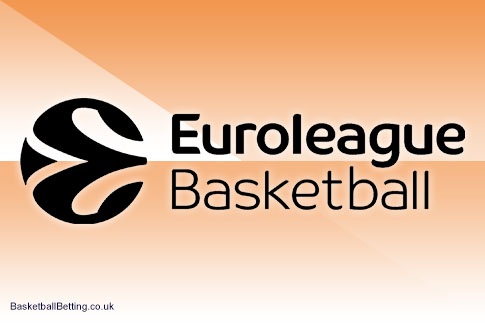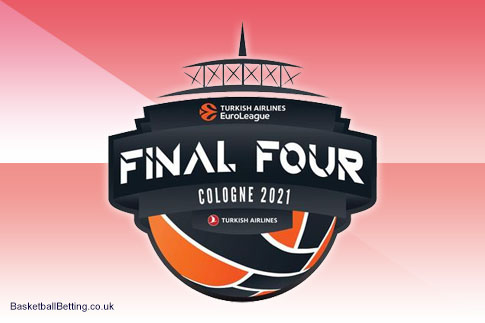Euroleague
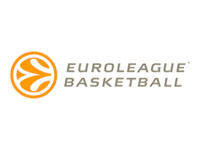
While the vast majority of focus on basketball is with the NBA, it is not the only major basketball league taking place around the world. If you are looking for an alternative to the NBA that will satisfy your basketball demands, you should check out Euroleague Basketball.
The first proper European basketball tournament was set up by FIBA with the European Champions Cup being set up in 1958. This ran all the way through until the 1999/2000 season when the Euroleague Basketball Company was formed and set up the Euroleague. There was a tug of war at the start of the 2000/01 season with two top basketball competitions in Europe. The existing league was known as the FIBA SuproLeague and the all-new Euroleague. There was a split amongst the best teams in Europe, but thankfully this was resolved in time for the beginning of the 2001/02 season.
How the Euroleague works
On this page you will find an explanation of the Euroleague to get a general understanding how the Euroleague actually works. On our other Euroleague pages, you will find season specific information. The current season covers everything related to betting on the Euroleague 2022/23 season.
- Euroleague 2022/2023 (current season)
- Euroleague 2021/2022
- Euroleague 2020/2021
- Euroleague 2016/2017
- Euroleague 2015/2016
- Euroleague 2012/2013
As you can see we haven’t covered all Euroleague seasons. This is something we hope to include in the near future, but we have other priorities for our website to complete. Also, the seasons we did cover also need some improvement, which we’ll do first.
The league is sponsored by Turkish Airlines
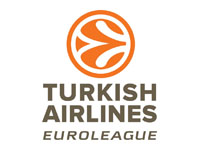
Thanks to a sponsorship agreement signed before the start of the 2010/11 campaign, which was scheduled to last for 5 seasons, the Euroleague is referred to as the Turkish Airlines Euroleague. This deal was believed to have been sealed for €15 million and contained a clause where it could be extended for another 5 years.
The extension of the sponsorship deal came sooner than expected, right before the start of the 2013/2014 season. The previous sponsorship agreement was expanded with another 5 years, until 2020.
Unfortunately there is not much information to be found about the current sponsorship deal. As we know, the league still goes by the name Turkish Airlines Euroleague, with the airline still being the main sponsor.
The format of the regular season
The regular season format of the Euroleague changes from time to time. This season, 2022/23, will have a total of 18 teams participating, just like last season. Last season was a bit different though, as the Euroleague ended with only 15 teams after the Russian teams were excluded because of the Russian invasion in Ukraine.
This season the teams are allocated as follows:
- 12 teams with a long-term licence
- 6 associated teams with an annual licence
- 1 wild card for two years
- 3 wild cards for one year
- 2 Eurocup finalists
No more qualifying rounds
The changes to the format of the Euroleague beginning with the 2016/17 season meant that they said goodbye to the qualifying rounds. The teams who were taking part in the 2016/17 season and the criteria for this season were as follows:
- 11 teams who hold a Euroleague franchise
- 3 teams who have qualified through their domestic record
- The holder of the Eurocup
- One wild card entry
This criteria has formed the 16 teams who took part in the 2016 Euroleague season. Once every team had played each other twice, the final rankings would decided who progressed to the Playoff Round. The top 8 teams in the table would progress.
| League | Future Bet | Team | Best Odds | Sportsbook | |
|---|---|---|---|---|---|
| Check out the odds of more basketball future bets in our betting guide. | |||||
| Euroleague | To Win Outright | FC BarcelonaFCB | 2.60 | Bet Now | |
| Euroleague | To Win Outright | Anadolu Efes | Anadolu EfesEFS | 5.00 | Bet Now |
| Euroleague | To Win Outright | CSKA Moscow | CSKA MoscowCSK | 5.50 | Bet Now |
| Euroleague | To Win Outright | AX Armani Exchange Milan | AX Armani Exchange MilanEA7 | 10.00 | Bet Now |
| Euroleague | To Win Outright | Fenerbahce Istanbul | Fenerbahce IstanbulFBU | 12.00 | Bet Now |
| Euroleague | To Win Outright | Real Madrid | Real MadridRMB | 13.00 | Bet Now |
| Euroleague | To Win Outright | Zenit St. Petersburg | Zenit St. Petersburg | 21.00 | Bet Now |
| Euroleague | To Win Outright | FC Bayern Munich | FC Bayern MunichMUN | 34.00 | Bet Now |
Before, teams were placed into groups by ranking
Before the 2016 Euroleague season, there were more teams and these were placed in groups. A total of 24 teams were split into 6 pots, which was based on their club ranking which was determined by a team’s record over the previous three seasons. Each group contained a team from each pot and a group couldn’t contain two clubs from the same country.
Once every team had played each other twice, the regular season was concluded and 8 teams dropped out of the league, resulting in 16 teams being left. The regular season was played out with 4 four groups of 6 teams being set up and the top four teams of each group progressed to the final 16.
Once the final rankings were allocated, the top eight teams would make their way into the Playoff Round.
Tiebreaker rules applied to split teams

- The head to head record
- The head to head point differential
- The point differential
- The points scored
- The sum of quotients of the points scored and lost
Once the final rankings were allocated, the top eight teams would make their way into the Playoff Round.
Playoff Round
The Playoff Round would see teams playing in a Best of 5 game series. The schedule for the Playoff Round is as follows:
- 1st in Regular Season v 8th in Regular Season
- 4th in Regular Season v 5th in Regular Season
- 3rd in Regular Season v 6th in Regular Season
- 2nd in Regular Season v 7th in Regular Season
The higher ranked of the two teams will have home advantage in Game 1, Game 2 and if necessary Game 5. The lower ranked team will have home advantage in Game 3 and if necessary Game 4.
The Final Four
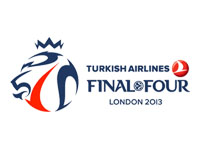
Once the final four teams have been decided, all focus falls on the Final Four. This sees the two semi-finals, the third and fourth match and the final all take place in one venue over a couple of days.
It has not yet been confirmed if there will be a pattern for determining who will play who in the Final Four, or if there will be a draw. In previous years, there has been a set pattern for determining these fixtures.
The teams who won the first and second quarterfinal play off against each other in the first semi-final and the teams who won the third and fourth quarter final play off against each other in the second semi-final.
The semi-finals are played out in a single match. The winning teams progress to the final whereas the two losing teams play in a third and fourth match.
The 2018/19 Euroleague season saw some changes in rules
There will be no changes in possession after a technical foul is committed. The offending team remains with the ball after being awarded a free throw shot.
During the final two minutes of regular time and during over time, a player who steps out of bounds during an inbound attempt receives a technical foul.
Perhaps the weirdest of all new rules is that a player is allowed to pass the ball to himself via the backboard while making an inbound attempt. This could, in fact, mean that a player is able to give himself an assist when making an alley-oop score.
There are some more changes in rules, which are similar to the changes introduced by FIBA. With the Euroleague reinstating the jump-ball in 2013, that is the only rule that really differs from FIBA. When the ball gets stuck between the rim and the backboard after a free throw, while there isn’t a pre-determined possession of the ball, there will be a jump-ball situation alternating an inbound.
A new format from the beginning of the 2017/18 season
The 2016/17 season saw a new challenge to the Euroleague with FIBA returning to European basketball at a higher level. The Champions League basketball tournament took place in Europe for the first time but with the top European teams locked into the Euroleague franchise, this league remained the number one event for basketball fans across the continent. However, a change of format for the 2016/17 season was introduced, with all 16 teams play each other twice in a singular league format during the regular season.
The new format continued during the 2018/19 Euroleague season
Each team played a total of 30 games during the regular season, which started October 11, 2018, and lasted until April 5, 2019. This meant that each of the 16 Euroleague teams played each other twice; one game at home and one on the road.
After the round-robin regular season, the top 8 teams progressed to the Playoffs, which was played from April 11, 2019, until April 30, 2019. The Euroleague Playoffs were a best of five series with the following structure:
- A: Place 1 against place 8
- B: Place 4 against place 5
- C: Place 3 against place 6
- D: Place 2 against place 7
